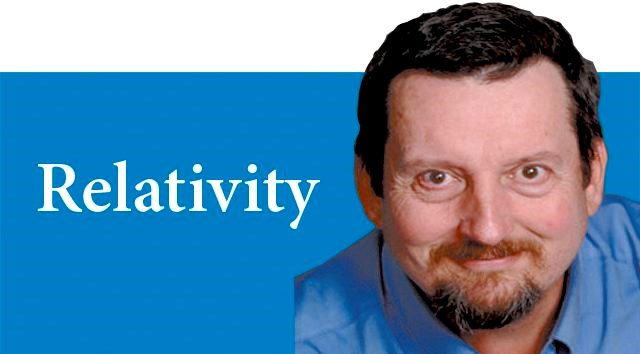For the past couple of weeks, we have been talking about the connection between the physical brain and the mind. It is a subject about which scientists know a great deal and not very much at all.
I say "a great deal" because for the past 150 years, neuroscientists, anatomists, psychologists, and psychiatrists, along with brain surgeons and general practitioners, have been teasing apart the physical structure of the brain.
They have been able to map where some functions appear to be located and determine the role of a number of components.
They have identified the various neurotransmitters found in the synapsis, established binding sites and mechanisms, and followed the action potential of neurons. Neuroscience is now at a level where it can monitor the actions of a single neuron inside a living rat's brain.
I say "not very much at all" because we still have a poor understanding of how the brain and its complex network of interconnected neurons, along with the sensory web of nerves permeating the entire body, give rise to consciousness and thought. Indeed, much of what we do doesn't require either consciousness or thought.
Consider, for example, if you had to think about every beat of your heart or every breath you take. It would be all that you do.
Indeed, mindful breathing is one way of removing the clutter from your mind. It is hard to think of anything else if you are concentrating on each breath.
But our zombie systems (the ones which make countless decisions for us on a daily basis) go well beyond just maintaining our autonomic functions such as breathing. We are learning animals. A characteristic of the human brain is its plasticity - it is capable of learning new things and restructuring its own internal network of neurons to incorporate new tasks.
Further, we are able to learn tasks so well, we don't even think about them. There are lots of examples such as walking, talking, running, throwing and even typing on a computer keyboard.
As long as I don't think about what I am doing, I can type about 75 words per minute. But if I start thinking about typing, I slow way down as my consciousness starts to interfere with the automatic movements my body already knows. (Typing this paragraph was difficult because I kept trying to think about where all the letters are on the keyboard.)
Much of what we do fits within the world of zombie thinking. It is rare we are conscious of everything involved in something as complex or as simple as taking a step. It involves shifts in balance, movement of the centre of mass, adjustments to dozens of muscles from the toes to the hips and torso, along with decisions about where to put your foot, how much pressure to apply, how to accommodate the force of impact, and on and on.
If you think about walking, it makes it much more difficult to actually walk. We trust in our learned behaviour and we trust we have learned it well enough we don't have to actually think about it. But how does this happen? How is it so much of what we do does not register in our consciousness?
And if it is not part of our consciousness, just who exactly is in control?
For example, the absence of conscious thought happens sometimes when we are driving and end up at home even though we knew we were supposed to stop at the grocery store.
You get distracted or thinking about something else such as work, the kids, dinner or just how bad the Blue Jays are playing this year. And while you are thinking about something else, the zombie processes in your brain take over.
Before you know it, they have driven you home.
Nobody is really sure how this all happens.
So while we have a detailed understanding of the brain, we are still not sure how the mind does what it does and, for that matter, why it does what it does.
We do know that for people who have suffered brain damage the mind can adjust and shift the site of functions within the brain to other regions. Or maybe the brain shifts the functions to new locations so the mind can still function.
This has been observed in a number of clinical settings. For example, a rare medical condition (Rasmussen's encephalitis) forced the removal of an entire hemisphere of a young girl's brain and yet she functions perfectly fine.
She is able to speak, learn math, sing, and has artistic abilities despite missing her right hemisphere. She is even an A student in school. The whole notion of left brain/right brain thinking is meaningless in her case.
The mind and the brain are inextricably linked but the question remains how.



